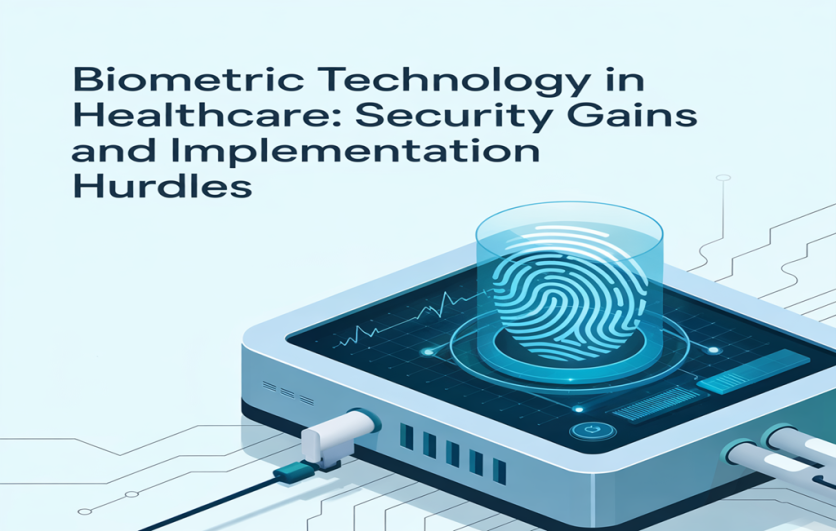
In a world where healthcare data breaches are becoming increasingly common, Sreenivasul Reddy Meegada offers timely insights into how biometric technologies are redefining security practices. With a background steeped in cybersecurity and technological innovation, she crafts a compelling case for the role of biometrics in safeguarding electronic health records (EHRs).
Outdated Defenses: Why Traditional Methods Are Failing
Passwords and PINs have long been the backbone of healthcare security, but they are proving inadequate. Studies show 63% of healthcare data breaches stem from compromised credentials. Healthcare workers manage an overwhelming number of passwords daily, leading to poor practices like sharing and writing down credentials. This fatigue jeopardizes security and drains time and resources that could be spent on patient care.
Biometrics to the Rescue: Reinventing Access Control
Biometric authentication—through fingerprints, facial recognition, iris patterns, and voice recognition—provides a powerful alternative. Facilities implementing biometric systems report a 68% reduction in unauthorized access incidents. Unlike passwords, biometric traits cannot be shared, guessed, or forgotten. Embedding accountability into every access point, biometric systems create comprehensive audit trails crucial for regulatory compliance and security monitoring.
A Voice That Opens Doors: The Rise of Voice Biometrics
Among biometric modalities, voice authentication stands out for its unique advantages. Contactless and accessible, voice biometrics reduce patient registration times by 72% and support infection control in clinical settings. Voice recognition technologies benefit elderly patients and individuals with disabilities, bridging a critical gap in healthcare inclusivity. Facilities adopting voice biometrics also observe fewer insurance claim denials and higher patient satisfaction.
Navigating the Maze: Compliance Made Stronger
Healthcare regulations such as HIPAA and GDPR impose strict requirements for securing patient data. Facilities using biometric systems often score significantly higher in compliance assessments, especially regarding access control standards. Biometric authentication enhances the precision of access logs and accelerates breach detection, slashing regulatory penalties and incident remediation costs by sizable margins.
Beyond Security: Boosting Efficiency in Clinical Workflows
Efficiency gains from biometric authentication are not just theoretical—they are quantifiable. Fingerprint authentication, for instance, completes in an average of 3.2 seconds, compared to the 8.7 seconds needed for password entry. Over time, this leads to hundreds of hours saved annually across a healthcare facility. Moreover, the technology dramatically reduces patient misidentification errors, thus minimizing adverse events and improving overall patient safety.
No Silver Bullet: Recognizing the Limitations
Despite its advantages, biometric technology faces operational hurdles. In clinical settings, accuracy drops due to environmental factors like frequent handwashing, gloves, and surgical masks. These factors can cause authentication failures that delay patient care—an unacceptable risk in emergencies. Furthermore, multimodal biometric systems, while more reliable, still show a small but significant margin of error.
Walking the Tightrope: Regulatory and Ethical Challenges
Legal and ethical considerations also weigh heavily on biometric adoption. Many healthcare organizations face substantial compliance costs, and data privacy lawsuits under laws like Illinois' BIPA add further complications. Patient consent remains a sensitive area, particularly among elderly populations who may feel uncomfortable with biometric data collection. To accommodate these concerns, facilities must offer alternative authentication methods, adding complexity to system design and management.
Climbing the Adoption Curve: Overcoming Barriers
Financial and operational barriers further complicate biometric implementation. Initial investments can run into hundreds of thousands of dollars, with significant recurring expenses. Integration with legacy healthcare systems often requires costly custom development. Staff resistance, training requirements, and initial productivity losses during deployment are additional hurdles that must be carefully managed to ensure successful adoption.
Blueprint for Success: Strategic Implementation Matters
Best practices for successful biometric deployment are emerging. Facilities that conduct thorough pre-implementation risk assessments and adopt phased rollout strategies report fewer post-deployment issues. Multi-modal biometric systems, combining fingerprint and voice authentication, offer higher reliability and better returns on investment. Structured communication programs with executive sponsorship and clinical champions significantly boost staff acceptance, ensuring smoother transitions.
In conclusion, Biometric technologies represent a transformative leap in healthcare security, promising to mitigate the chronic vulnerabilities of traditional authentication systems. While challenges in environmental adaptability, regulatory compliance, and user acceptance remain, strategic planning and phased implementation can unlock the full potential of these innovations. Sreenivasul Reddy Meegada compellingly argues that, with careful navigation, biometric authentication can not only enhance security but also streamline operations, ultimately steering healthcare toward a more secure and efficient future.
ⓒ 2025 TECHTIMES.com All rights reserved. Do not reproduce without permission.




